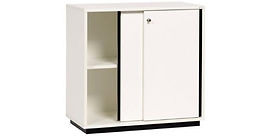Health & Environment at work

Better health at work through smart planning
Unwind
The boss's inspiration
Healthy meetings
Health survey
1. Better health at work through smart planning
Getting better at planning is an important key to better health in the workplace. By planning, you not only reduce your own stress, but also the risk of spreading stress to your colleagues. Planning is something most of us didn't learn in school. Sure, you can take courses, but an easy and free alternative is to share tips within the organization.
Here are two good ways to start:
See the deadline as the last possible day, not the working day when everything must be completed. By planning time for the task well in advance, the chances of the work being completed on time and colleagues not having to worry about delays increase. Estimate the time required and put it in the calendar – preferably with a little extra margin.
Don’t just write deadlines in your calendar – also schedule when the work will be done. Starting the day without a plan often leads to us jumping between tasks and letting the latest email take over. This behavior is often reinforced when we are most stressed.

2. Utforska hur medarbetarna varvar ner
Alla har sina egna sätt att stressa av. Extroverta personer får ofta energi av att umgås, medan introverta hellre återhämtar sig på egen hand. Vissa behöver tystnad, andra slappnar av med musik.
När ni känner till varandras sätt att koppla av blir det enklare att skapa en arbetsmiljö som fungerar för alla. Det leder också till större förståelse för olika vanor och personliga behov. Ibland kan just små insikter göra stor skillnad.
Here are some good ways to start:
Take a short walk, collect your thoughts.
Ask employees what they do to unwind and find energy.
Avoid people who take energy, find those who give you energy.
Take a micro break regularly, find your energy bubble where you find energy to be able to focus on the day's goals. Set clear goals for yourself.

3 . Let your boss inspire good habits
We are greatly influenced by the people around us. Bad habits can be contagious – but fortunately, so can good habits. By having each manager choose a healthy routine that they systematically stick to, they can inspire the entire group.
It can be simple things like taking a walk at lunch, taking a short break every hour, eating more vegetables, or taking a break outside in the fresh air. When the boss himself lives as he preaches, it becomes natural for more people to join in. Small steps can have big effects.
Here are two good ways to start:
As a manager, you are the person who leads, innovate and try new things every day. Inspire others to follow.
Find colleagues with similar views and lifestyles to you. Set your own goals that you can mentally focus on. It can be anything from diet goals to adventures you dream of. Take a step in that direction every day.

4 . Make meetings healthier
Many meetings involve long periods of sitting, but the body feels best when it moves. By changing the way you hold meetings, you can make them part of your company's wellness efforts. Take a break to stretch every 30 minutes, try standing meetings, or set a clear time limit so that meetings don't drag on.
Here are two good ways to start:
Many people need energy intake during the day, and a meeting is no exception, quite the opposite, here more energy is needed in the form of a tasty experience. It increases the energy in the room so that it is easier to be active and productive in the room.
Divide the points, with some meetings in different environments. This makes you in the group more activated and focused on each topic. (think of it as an internal orientation without a compass).

5. Satsa rätt med hälsokartläggning
En hälsokartläggning kan ge värdefulla insikter både för individen och organisationen. Det kan handla om tester för näringsstatus, hjärt- och kärlhälsa eller stressnivåer.
För medarbetaren blir det lättare att förstå vilka hälsoområden som är viktigast att prioritera. För företaget blir det en vägledning i vilka satsningar som faktiskt gör störst skillnad. På så sätt kan man rikta insatserna där de gör mest nytta – och skapa en friskare arbetsplats.
Here are some good ways to start:
Create a task that is related to getting a good picture of the person's health status, for example, giving a new task that shows the person's ability to organize.
Have each employee undergo a medical screening to understand their health status and how you as a company can capture and highlight each individual's personal needs. Each employee is the backbone of the company, and healthy employees make for a healthy and prosperous company.
Organize different activities every year, physical, mental

Inspiration
Snacks for coffee (fruit, cookies, brownies, nuts etc) energy bars
Relaxation music (common relaxation music in the premises)
Micro breaks (5 min every hour, do stretching exercises)
Audiobooks with inspiration (being able to go to a quiet room and relax to a short audiobook)
Clothes - Socks - Hoodie - T-shirt (you should be able to borrow clothes at your workplace if needed)
Subscribe to get more tips: only 79kr/month
Subject information - 895 SEK
Request payment link

Office environment
The best office environments offer flexibility
With varying zones such as quiet rooms, meeting rooms and social spaces to support different work activities and increase employees' sense of control and well-being.
An optimized environment
Includes good lighting, ventilation, temperature and a
well-thought-out color scheme, as well as ergonomic furniture & ergonomic computer accessories.
Involve employees
Mute noise through sound absorbers and carpets, and create a healthy and
safe workplace with open communication.
1. Activity-based flexibility
Increased control:
Having the freedom to choose the workplace and environment as needed increases the sense of control among employees.
Hybrid work:
Design the office to support hybrid work models, where employees split their time between the office and home office.
Create different zones:
Set up different types of workspaces to suit different tasks – quiet zones for focused work, project rooms for group work, and social spaces for collaboration and breaks.



Quiet rooms for individuals & meetings
Inside - Outside - At home?
Home office
2. Physical environment
Lighting, air and temperature:
Ensure optimal lighting, good air quality and comfortable temperature for all employees.
Sound environment:
Mute noise using sound absorbers, mats and screens to create a comfortable sound level.
Ergonomics:
Provide ergonomic furniture & accessories, such as height-adjustable desks, to promote good posture and reduce the risk of strain injuries.
Floor screens Sound absorbers
Raise & Lower Tables - Table Stands
Ergonomic furniture & accessories
3. Color and design
Plants:
Add plants to enhance the overall look, improve air quality and create a more natural environment.
Theme rooms
Create themed rooms with themes such as Alaska, Costa Rica, Bunker, etc.
Color scheme:
Use colors that create a positive and inspiring atmosphere, such as muted earthy shades like olive green and terracotta, which are easy to combine with other materials.
Live plants bring life to the office
4. Employee influence and well-being
Healthy workplace:
Create an environment based on trust, open communication and mutual respect that encourages development and collaboration.
Seen & heard
Everyone should be able to be in the room and both seen and heard, not just the loud clown in the coffee room who is going to make fun of others.
Involve employees:
Let employees be involved in designing rules of conduct and interior design to increase well-being and a sense of participation.
Build a future with the company
Common rules that everyone has approved
Let everyone join in and play
5. Functional rooms
Personal spheres:
Use interior design features such as storage and screens to create personal spaces and privacy, even in an open office environment.
Available meeting rooms:
Ensure that there are enough and functioning meeting rooms and quiet rooms that are easily accessible to everyone.
Shielding Sound absorption
Quiet rooms
Storage lockers at work










